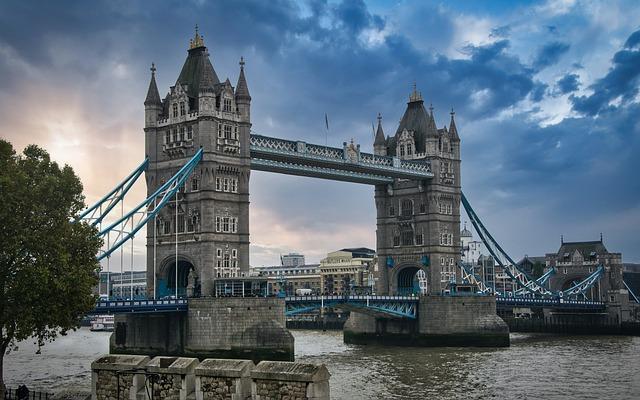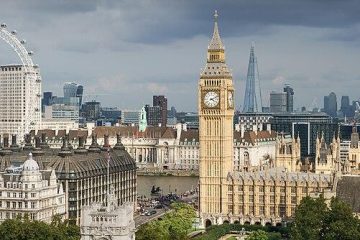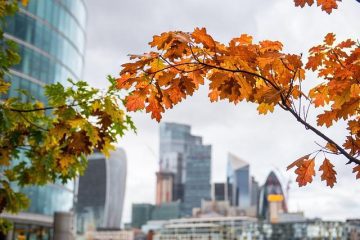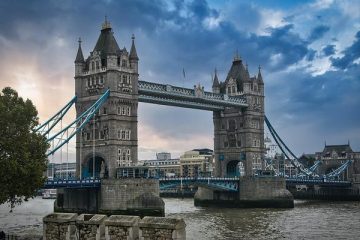Nestled amid the rich tapestry of British culture lies a bustling metropolis known for its iconic landmarks, diverse neighborhoods, and vibrant energy – London. At the heart of this dynamic city beats the pulse of a population as colorful and varied as the cityscape itself. Join us on a journey to unravel the intricate layers of London’s population, from its historical roots to its modern-day diversity, as we explore the fascinating tapestry of humanity that calls this cosmopolitan hub home.
Table of Contents
- Exploring the Diverse Demographics of London
- Factors Influencing Population Growth in London
- Challenges Faced by London’s Growing Population
- Sustainable Solutions for Managing London’s Population
- Future Outlook: Innovations to Support London’s Population
- Q&A
- To Wrap It Up


Exploring the Diverse Demographics of London
London, a vibrant metropolis, is a melting pot of cultures and nationalities, making it one of the most diverse cities in the world. The city’s population is a mosaic of different ethnicities, religions, and backgrounds, creating a rich tapestry of traditions and customs. Residents and tourists alike can experience a culinary journey through the various neighborhoods, from traditional British pubs serving fish and chips to authentic Indian curries in Brick Lane.In London, each borough has its own unique character and charm, attracting people from all walks of life. From the bustling streets of Camden Town with its alternative scene to the upscale boutiques of Kensington, there is something for everyone in this bustling cosmopolitan hub. The city’s diversity is not only reflected in its population but also in its architecture, parks, and museums, offering a kaleidoscope of experiences for all who visit.

Factors Influencing Population Growth in London
are multifaceted and dynamic, contributing to the ever-evolving demographic landscape of this vibrant city. Economic opportunities play a significant role in attracting people to London, with its diverse job market spanning industries such as finance, technology, healthcare, and creative arts. The lure of career advancement and higher salaries often draws individuals from all walks of life to seek employment in the city, contributing to its population growth.Moreover, cultural diversity acts as a magnet for individuals looking to experience a rich tapestry of traditions, languages, and lifestyles. London’s status as a melting pot of cultures not only fosters inclusivity but also provides a unique environment for personal and professional growth. The city’s array of cultural events, international cuisine, and historical landmarks further enhance its appeal, making it a preferred destination for those seeking a vibrant and cosmopolitan setting.

Challenges Faced by London’s Growing Population
London’s increasing population brings forth a myriad of challenges that impact the city’s infrastructure and resources. Traffic congestion stands as a prominent issue, with the bustling streets becoming more congested as the population grows. This leads to longer commute times and heightened levels of pollution, affecting the overall quality of life for Londoners.Another significant challenge is the demand for affordable housing. With more people flocking to London for various opportunities, the housing market faces immense pressure to accommodate the rising population. This results in soaring property prices, making it increasingly difficult for individuals to find affordable homes, especially in central areas. The need for sustainable urban planning and innovative solutions becomes crucial to address this housing crisis effectively.
| Challenges | Impacts |
|---|---|
| Traffic congestion | Longer commute times, increased pollution |
| Demand for affordable housing | Soaring property prices, housing crisis |


Sustainable Solutions for Managing London’s Population
In a bustling metropolis like London, finding sustainable solutions to manage the growing population is imperative for the city’s future. Embracing eco-friendly infrastructure projects, such as rooftop gardens on high-rise buildings, can not only provide green spaces for residents but also contribute to urban air quality improvement.
Encouraging the adoption of public transport, cycling, and walking through the development of pedestrian-friendly zones and bike-sharing programs can help reduce traffic congestion and carbon emissions. Additionally, implementing innovative waste management systems that prioritize recycling and composting can aid in creating a cleaner and greener environment for all Londoners.


Future Outlook: Innovations to Support London’s Population
London’s ever-evolving landscape requires continuous innovation to support its growing population. One exciting development on the horizon is the implementation of smart infrastructure projects aimed at enhancing the city’s efficiency and sustainability. From smart transportation systems that optimize traffic flow to eco-friendly buildings equipped with cutting-edge technologies, London is poised to lead the way in urban innovation.
Furthermore, initiatives focusing on green spaces and community-driven solutions are set to redefine the urban living experience. Imagine lush rooftop gardens providing a breath of fresh air amidst the city hustle or interactive community hubs designed to foster social connections. These innovative approaches not only aim to address the challenges of urbanization but also prioritize citizen well-being and environmental stewardship, shaping a future where London thrives as a model smart city.
Q&A
**Q: What is the current population of London?**A: As of the latest data available, London’s population stands at approximately 9 million people, making it one of the most populous cities in Europe.
Q: How has London’s population changed over the years?
A: London’s population has been on a steady rise over the years, fueled by factors such as immigration, natural growth, and an influx of professionals seeking opportunities in the city.
Q: What are some key factors contributing to London’s population growth?
A: London’s appeal as a global financial hub, cultural melting pot, and vibrant urban center has attracted people from all walks of life, leading to a diverse and dynamic population mix.
Q: How does London’s population density compare to other major cities?
A: London boasts a relatively high population density compared to other global cities, with its iconic skyline and bustling neighborhoods reflecting the vibrant energy of its residents.
Q: What challenges does the growing population pose for London?
A: The increasing population in London has led to concerns regarding housing availability, pressure on infrastructure, and the need for sustainable urban planning to support the city’s continued growth.
Q: How does London’s multicultural population enrich the city’s social fabric?
A: London’s multicultural population brings together a tapestry of languages, cuisines, traditions, and perspectives, creating a rich and dynamic social landscape that celebrates diversity.





0 Comments